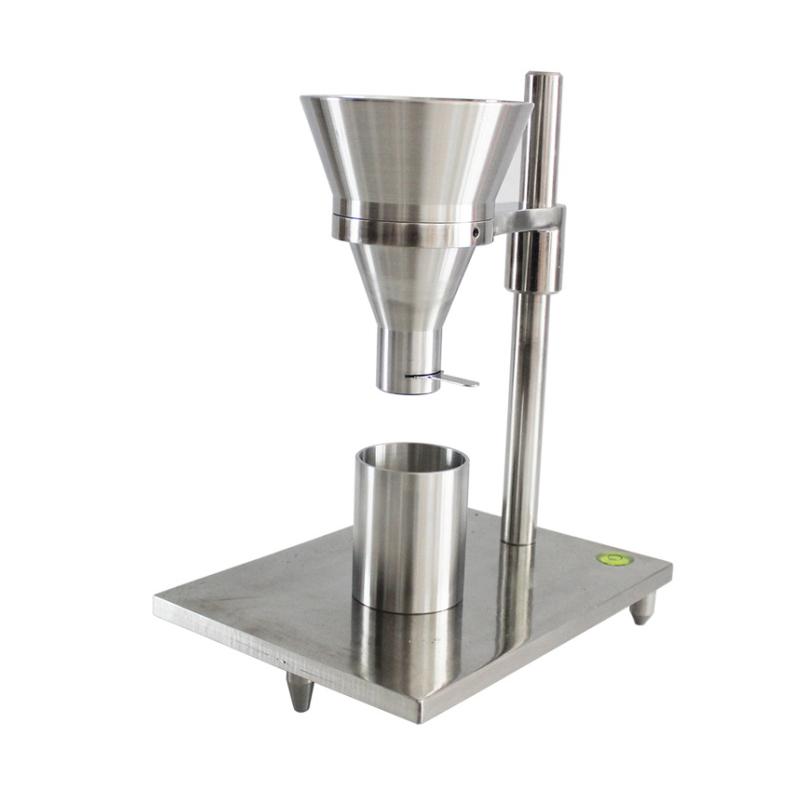Densitometry: Key performance parameters for the powder coatings and pigments industry
Densitometry plays an important role in the manufacturing of powder coatings, pigments and related products. Different methods of density determination, including the measurement of apparent density and true density, will be introduced in this paper. These determination methods are essential for product quality control and performance optimization, while also helping to reduce production costs and reduce environmental impact.
The Importance of Density
Density is the ratio of mass to volume of a substance and is an important physical property parameter. Density plays a key role in the manufacturing and application of powder coatings, pigments, and related products. Densitometry helps to determine the physical properties of the product, including interparticle voids, packing density, and mass distribution. This information is essential for the control and improvement of product performance.
Densitometry: Key performance parameters for the powder coatings and pigments industry
Determination of apparent density
Apparent density refers to the space occupied by the bulk of a loose solid, including the volume of the solid itself and the gap. It is commonly used to describe the density of particles or powders, as well as in connection with the packaging and storage of products. Apparent density can be determined using different techniques, including liquid and gas methods.
Liquid method: This is an economical and simple method of determination. It involves immersing the object under test in a liquid, such as kerosene or hexane, to measure the volume of the displaced liquid. The apparent density is then calculated by dividing the mass of the object by its actual volume. Note, however, that the indirect nature of the measured volume may lead to a situation of low density.

Gas method: This method requires instrumentation but provides greater accuracy. It involves the use of a densitometer that determines the volume of an object by measuring the displacement of the gas. This method has higher accuracy and is suitable for density determination with more stringent requirements.
Determination of true density
True density is the ratio of the mass of a substance to the volume it actually occupies. This is a more accurate densitometry method and is commonly used to determine the density of particles, powder coatings, pigments, crosslinkers and resin powders. The determination of true density requires instruments and materials, including balances, beakers, specific gravity bottles, kerosene or hexane, and densitometers.
Experimental procedures for density determination
Liquid method determination:
Parallel determination of three samples was performed.
The subject is immersed in the liquid and the volume of the displaced liquid is measured.
The apparent density is calculated by dividing the mass of an object by its actual volume.
Report test results to one decimal place.
Densitometry: Key performance parameters for the powder coatings and pigments industry
Gas method:
Parallel determination of three samples was performed.
Using a densitometer, the volume of an object is determined by measuring the displacement of the gas.
Calculate the true density by dividing the mass of the object by the volume it actually occupies.
Report test results to one decimal place.
Standard of reference
The accuracy of densitometry is critical to product quality. Reference to national and international standards can ensure consistency and comparability of tests. Some of the relevant standard documents include ISO 8130-2-1997, ISO 8130-3, ISO 787-10 and GB/T 5211.4-85.
Densitometry: Key performance parameters for the powder coatings and pigments industry
Conclusion
Density determination is of great significance in the manufacturing of powder coatings, pigments and related products. Different determination methods, including apparent and true density, can help producers ensure product quality and optimize production processes. Accurate density determination helps to reduce costs, improve production efficiency, and reduce adverse environmental impacts. Therefore, densitometry is widely used in industrial applications to ensure that the product meets the requirements in all aspects.
